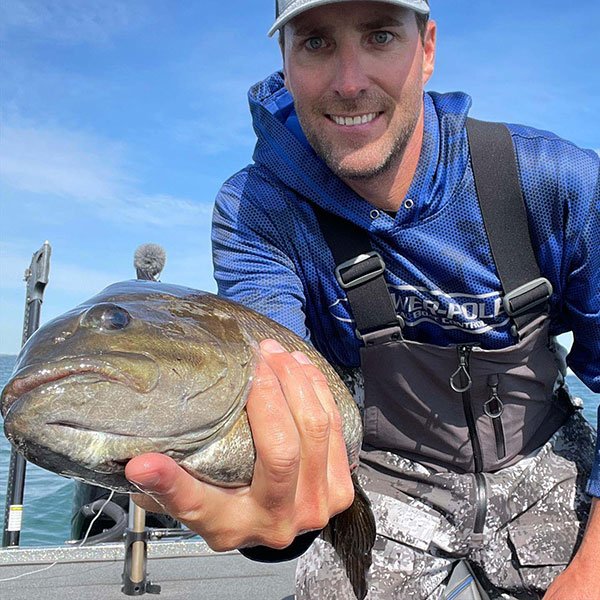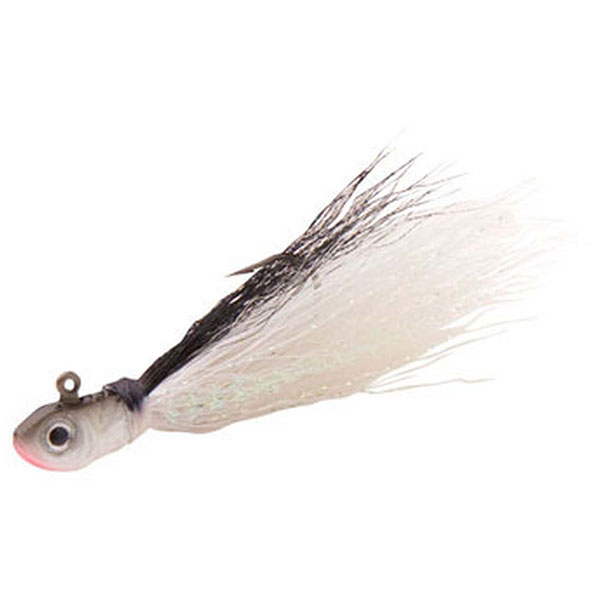St. Croix Report
 Smallmouth specialist, Travis Manson
Smallmouth specialist, Travis Manson
Smallmouth specialist and previous Bassmaster Elite angler, Travis Manson, is owner of Travis Manson’s Guide Service and host of the popular Smallmouth Crush live stream and podcast. The wayfaring guide grew up fishing in northern Wisconsin, but now tackles Maryland’s Chesapeake Bay, as well as upstate New York’s St. Lawrence River and Lake Ontario’s 1000 Islands region. He’s particularly handy with a jig, and as angler and guide who spends hundreds of days per year fishing for smallies, Mason considers hair jigs absolutely imperative. “It’s effective at catching smallmouth anywhere fish have good visibility. If I can see two to three feet or more into the water, I feel good about using the hair jig,” says Manson.
The proclivity of hair jigs to entice big fish is now well-known, but that wasn’t always the case. “There is something about the hair jig that smallmouth love, and for a number of years a lot of high-profile anglers were able to keep it to themselves,” Manson says. “Although the hair jig has been around for a long time it really started to come back in the smallmouth community in the mid 2000's. There were a few years when only a few anglers were consistently using this bait and doing very well before word got out. It can be a magical technique at times.”
Manson says he’s always got a hair jig tied on and ready to go, regardless of the season. “Early spring when the water temps are still in the 30's and 40's, hair jigging can be one of the only techniques that will actually work, and success continues as the water warms, too,” Manson notes. “Throughout the summer months a lot of our Great Lakes smallmouth love to feed shallow. Fishing the hair jig in two-to-ten feet of water on flats and the top side of steep break lines is very effective.”
 Buckaroo Jig
Buckaroo Jig
Manson says casting with the wind to your back is the best way to fish a hair jig because it helps maximize casting distance. “Most of the jigs I use on a regular basis are 1/8-ounce or lighter. I want to make a long cast and make a slow horizontal swimming presentation,” he advises. “You want to pay attention to your bait on the retrieve and take notice if you see a bass following the jig. If you still have a lot of retrieve left, don’t stop the bait. That fish still might commit. If it doesn't eat and isn't spooked by your presence, throw the hair jig right back near the direction the fish is moving and let it fall to the bottom. A lot of times that fish will come over and eat the jig as it is lying motionless on the bottom. Try some small twitches if necessary. If the fish still doesn't commit, try feeding it a follow-up bait like a Ned rig or drop shot.”
Manson delves into the details that are critical to successful hair jigging. “I won’t use anything larger than five-pound braid because it helps maximize casting distance,” he says. “I like white line because anytime I am fishing a bait horizontally through the water column I want the line to blend into the sky. Often times a fish is looking up at the bait and that white line blends really well in clear water. A leader is also a must. I prefer to use at least six feet of either six- or eight-pound fluorocarbon as a leader.”
Manson says the specialized work of hair jigging requires an equally specialized rod. “Any spinning rod over seven feet long with a medium-light power and a fast or extra-fast action will suffice,” he says, “but an even longer rod will help deliver longer casts and better hooksets, and an extra-fast tip aids in casting accuracy and bite detection.” With such specifications on the table, it should be no surprise that Manson’s favorite hair-jigging rod is St. Croix’s new 7’10” Victory Cross Hair Rod (VTS710MLXF).
“The Victory Cross Hair rod makes some of the longest casts possible and excels in everything I need a hair-jigging rod to do,” Mason says. “It’s light, sensitive, well-balanced and extremely comfortable to fish with. That said, you also need a smooth spinning reel designed for long casting light line. I tend to prefer 3000-size spinning reels because they typically have a wider spool which helps increase casting distance and line management. They usually also have a higher gear ratio, which can also be helpful.”